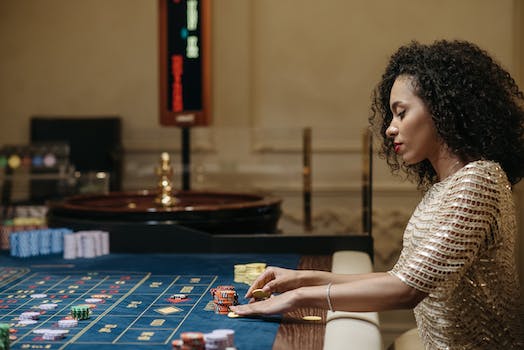Blackjack Rules Explained: Know the Game Inside Out
Blackjack is a popular card game played in casinos worldwide. It is a game of skill and strategy, where players aim to beat the dealer’s hand without exceeding a total of 21. Understanding the rules of blackjack is crucial for anyone looking to play the game, as it involves specific actions, terminology, and betting options. In this guide, we will provide a comprehensive explanation of the basic rules of blackjack, ensuring you have a solid understanding of the game before stepping up to the table.
Basic Blackjack Rules: A Beginner’s Guide
Blackjack is a classic casino game that has been enjoyed by gamblers for centuries. Its popularity lies in its simplicity and the excitement it brings to players. If you’re new to blackjack, understanding the basic rules is essential before diving into the game. In this beginner’s guide, we will walk you through the fundamental principles of blackjack, ensuring you know the game inside out.
At its core, blackjack is a card game played between the player and the dealer. The objective is to have a hand value closer to 21 than the dealer without exceeding that number. Each card in the deck carries a specific value: numbered cards are worth their face value, while face cards (King, Queen, Jack) are valued at 10. The Ace can be counted as either 1 or 11, depending on which value benefits the player more.
To start the game, both the player and the dealer are dealt two cards each. The player’s cards are usually placed face-up, allowing everyone at the table to see them, while one of the dealer’s cards remains hidden. This creates an element of suspense and strategy for the player.
After receiving their initial cards, players have several options to choose from. The most common move is “hitting,” where the player requests additional cards to improve their hand. Players can hit until they feel satisfied with their hand or until they exceed 21, resulting in a “bust” and an automatic loss.
Another option available to players is to “stand.” This means they are content with their current hand and do not wish to receive any more cards. Once all players have made their decisions, it’s the dealer’s turn to reveal their hidden card and make their own moves.
The dealer must follow a strict set of rules when playing blackjack. Generally, if the dealer’s hand value is 16 or less, they must hit until they reach a total of 17 or higher. If the dealer busts, all players who haven’t already busted win automatically. However, if the dealer’s hand value is higher than the player’s without going over 21, the player loses.
In addition to hitting and standing, there are two other moves available to players: “splitting” and “doubling down.” Splitting occurs when a player receives two cards of the same rank. They can choose to split their hand into two separate hands, with each receiving an additional card. This move requires the player to place an additional bet equal to their original wager. It’s important to note that not all casinos allow splitting certain pairs, so be sure to check the specific rules beforehand.
Doubling down is another strategic move where the player doubles their initial bet after receiving their first two cards. In return, they receive only one additional card. This move is often used when the player believes they have a strong chance of beating the dealer with just one more card.
Understanding these basic blackjack rules will give you a solid foundation for playing the game. Remember, the goal is to get as close to 21 as possible without going over while also beating the dealer’s hand. With practice and experience, you’ll develop your own strategies and become a skilled blackjack player. So, grab a deck of cards, find a table, and let the games begin!
Understanding the Objective of Blackjack: How to Win
Blackjack is a popular card game that has been enjoyed by players around the world for centuries. With its simple rules and fast-paced gameplay, it’s no wonder why this game continues to attract both casual players and seasoned gamblers alike.
To truly appreciate and excel at blackjack, it’s important to understand the objective of the game and how to win. The goal of blackjack is straightforward – beat the dealer’s hand without exceeding a total of 21. This means that your primary focus should be on achieving a higher hand value than the dealer, but not going over that magic number.
In order to achieve this objective, players are dealt two cards initially, while the dealer receives one face-up card and one face-down card. The value of each card is determined by its rank, with numbered cards worth their face value, face cards (such as kings, queens, and jacks) worth 10 points each, and aces being either 1 or 11 points, depending on which value benefits the player more.
Once the initial cards are dealt, players have several options available to them. They can choose to “hit” and receive an additional card in an attempt to improve their hand, or they can “stand” and keep their current hand. Additionally, players may also have the option to “double down,” which allows them to double their original bet in exchange for receiving only one more card.
Another possible move is to “split” when a player is dealt two cards of the same rank. This allows them to create two separate hands and play them independently, effectively doubling their chances of beating the dealer. However, it’s important to note that splitting typically requires an additional bet equal to the original wager.
Knowing when to make these strategic moves is crucial for success in blackjack. It requires a combination of skill, intuition, and a solid understanding of basic strategy. Basic strategy involves using mathematical calculations to determine the statistically optimal move in any given situation. By following basic strategy, players can minimize the house edge and increase their chances of winning.
It’s also important to be aware of the dealer’s rules when playing blackjack. In most cases, the dealer must hit on a hand value of 16 or less and stand on a hand value of 17 or more. This means that if the dealer’s hand exceeds 21, all remaining players at the table automatically win, regardless of their own hand values.
Furthermore, there are additional betting options available in some variations of blackjack. For example, players may have the option to place an insurance bet if the dealer’s face-up card is an ace. This bet pays out 2:1 if the dealer has a blackjack (a two-card hand worth exactly 21), effectively protecting the player from losing their initial wager.
In conclusion, understanding the objective of blackjack and how to win is crucial for anyone looking to master this classic card game. By aiming to beat the dealer’s hand without exceeding 21, making strategic moves based on basic strategy, and being aware of the dealer’s rules and additional betting options, players can increase their chances of success. So, whether you’re a beginner or a seasoned pro, take the time to study and learn the ins and outs of blackjack – it’s a game that rewards both skill and luck.
Explaining Card Values in Blackjack: Know Your Numbers
Blackjack is a popular card game that has been enjoyed by gamblers for centuries. Its simplicity and fast-paced nature make it a favorite among casino-goers around the world. However, before you can master the art of playing blackjack, it’s important to understand the rules of the game.
One fundamental aspect of blackjack is knowing the value of each card. In this article, we will delve into the world of card values in blackjack, helping you know your numbers inside out.
To begin with, let’s start with the basics. In blackjack, cards from 2 to 10 are worth their face value. This means that if you have a 5 of hearts, it counts as 5 points towards your total hand value. Similarly, a 9 of spades would be worth 9 points. It’s pretty straightforward so far, right?
Moving on, we come to the face cards – the kings, queens, and jacks. These cards are all valued at 10 points each. So whether you have a king of clubs or a queen of diamonds, they both contribute 10 points to your hand. Remembering this rule will save you from any confusion during the game.
Now, here comes the most interesting part – the ace. The ace is a special card in blackjack because it can be worth either 1 point or 11 points, depending on what suits your hand best. For example, if you have an ace and a 6, you could count the ace as 11 points, giving you a total hand value of 17. On the other hand, if you have an ace and a 10, counting the ace as 11 would give you a hand value of 21 – the coveted blackjack!
Understanding how the ace works is crucial to your success in blackjack. It gives you flexibility and allows you to adapt your strategy based on the situation at hand. If you’re dealt an ace and a low-value card, it’s usually best to count the ace as 11. However, if you have a hand that already totals close to 21, counting the ace as 1 can prevent you from going over and busting.
Knowing your numbers in blackjack is not just about memorizing the values of each card; it’s also about understanding how they interact with one another. The goal of the game is to get as close to 21 as possible without going over. This means that you need to carefully calculate the value of your hand based on the cards you’ve been dealt.
For instance, let’s say you have a 7 and an 8 – together, they add up to 15 points. If you decide to hit and receive a 9, your total hand value would be 24, which means you’re out of the game. On the other hand, if you had chosen to stand with a hand value of 15, you would have a better chance of winning.
In conclusion, understanding the card values in blackjack is essential for becoming a skilled player. Remember that numbered cards are worth their face value, face cards are all valued at 10 points, and the ace can be worth either 1 or 11 points. By mastering these rules and applying them strategically during gameplay, you’ll be well on your way to success at the blackjack table. So go ahead, study those card values, and enjoy the thrill of this classic casino game!
The Role of the Dealer in Blackjack: What You Need to Know
Blackjack is a popular card game that has been enjoyed by players around the world for many years. It is a game of skill and strategy, where players aim to get a hand with a total value as close to 21 as possible without going over. While the objective may seem simple enough, understanding the rules and intricacies of the game is crucial to increasing your chances of winning. In this article, we will delve into the role of the dealer in blackjack and provide you with all the information you need to know.
The dealer plays a vital role in the game of blackjack. They are responsible for dealing the cards, collecting bets, and enforcing the rules of the game. The dealer is typically an employee of the casino and must follow strict guidelines to ensure fairness and integrity.
When playing blackjack, the dealer starts by shuffling the deck of cards. This ensures that the game is conducted fairly and that no one has an advantage. Once the cards have been shuffled, the dealer will ask each player to place their bets. Bets are placed by placing chips on the designated betting area on the table.
Once all bets have been placed, the dealer begins dealing the cards. Each player, including the dealer, receives two cards. The players’ cards are dealt face-up, while the dealer’s first card is dealt face-down (known as the hole card) and the second card face-up.
After the initial deal, players take turns making decisions about their hands. They can choose to “hit” and receive another card from the dealer or “stand” and keep their current hand. Players also have the option to “split” if they are dealt two cards of the same value. This allows them to create two separate hands and double their bet. Additionally, players can “double down” by doubling their original bet and receiving one more card.
As the game progresses, it is important to pay attention to the dealer’s actions. The dealer must follow a set of rules known as the “house rules.” These rules dictate when the dealer must hit or stand based on the value of their hand. For example, if the dealer’s hand has a total value of 16 or less, they must hit. If their hand has a total value of 17 or more, they must stand.
It is worth noting that the dealer’s actions can greatly influence the outcome of the game. If the dealer busts (goes over 21), all players who have not busted win their bets. However, if the dealer does not bust and has a higher hand value than the player, the player loses their bet.
Understanding the role of the dealer in blackjack is essential for any player looking to master the game. By knowing the dealer’s responsibilities and following their actions closely, players can make informed decisions about their own hands. Remember, blackjack is not just a game of chance but also one of skill and strategy. So, take the time to familiarize yourself with the rules, practice your strategies, and enjoy the excitement of this classic casino game.
Key Terminologies in Blackjack: Mastering the Lingo
Blackjack is a popular card game that has been played in casinos for centuries. It’s a game of skill and strategy, where players aim to have a hand value higher than the dealer’s without going over 21. To fully understand the game, it’s important to familiarize yourself with the key terminologies used in blackjack.
Firstly, let’s talk about the deck of cards used in blackjack. The game is typically played with one or more standard decks of 52 cards. Each card has a specific value: numbered cards are worth their face value, face cards (King, Queen, and Jack) are worth 10, and Aces can be worth either 1 or 11, depending on the player’s choice.
Next, we have the dealer, who represents the casino. The dealer’s role is to shuffle and deal the cards, as well as manage the game. In most cases, the dealer stands behind a table with a designated spot for each player. The dealer also follows certain rules when playing their own hand.
Moving on, let’s discuss the concept of hand value. This refers to the total sum of the cards in a player’s hand. As mentioned earlier, the goal is to get a hand value higher than the dealer’s without exceeding 21. If a player’s hand exceeds 21, they go bust and automatically lose the round.
To play blackjack, players must place their bets before any cards are dealt. Once all bets are placed, the dealer will start dealing the cards. Each player receives two cards face-up, while the dealer gets one card face-up and another face-down.
Now, let’s delve into some crucial terms related to gameplay. The first term is “hit.” When a player chooses to hit, they ask the dealer for another card to be added to their hand. This is done when the player believes that an additional card will improve their hand value.
On the other hand, if a player is satisfied with their hand and believes it’s strong enough to beat the dealer, they can choose to “stand.” This means that the player does not want any more cards and is ready for the dealer to reveal their hand.
Another important term is “double down.” This option allows players to double their original bet in exchange for receiving only one additional card. It’s typically done when a player has a strong hand and believes that one more card will give them a winning advantage.
Lastly, we have “splitting” and “surrendering.” Splitting occurs when a player’s first two cards are of the same value, allowing them to split them into two separate hands. Surrendering, on the other hand, is an option where a player forfeits half of their bet instead of playing out the hand.
Understanding these key terminologies will greatly enhance your blackjack experience. By mastering the lingo, you’ll be able to confidently navigate through each round and make informed decisions. Remember, blackjack is not just a game of chance – it requires skill, strategy, and knowledge of the rules. So, next time you’re at the casino, impress your friends with your understanding of blackjack terms and enjoy the thrill of the game like never before.
Essential Tips for Playing by Blackjack Rules: Strategies for Success
Blackjack is a popular card game that has been enjoyed by players around the world for centuries. It combines strategy, skill, and a bit of luck to create an exciting and thrilling experience. However, in order to fully enjoy the game and increase your chances of winning, it’s important to understand and follow the blackjack rules.
One of the essential tips for playing blackjack is to know the basic rules of the game. The objective of blackjack is to beat the dealer’s hand without going over 21. Each player is dealt two cards initially, and then they have the option to take additional cards or stand with their current hand. The value of each card is determined by its face value, except for face cards (Jack, Queen, King) which are worth 10, and Aces which can be worth either 1 or 11.
To successfully navigate the game, it’s crucial to familiarize yourself with the various strategies used in blackjack. One common strategy is called “basic strategy,” which involves making decisions based on statistical probabilities. For example, if you have a hand totaling 16 while the dealer’s upcard is 7 or higher, it’s generally recommended to hit rather than stand. Understanding and utilizing these strategies can greatly improve your chances of winning.
Another important aspect of playing blackjack by the rules is knowing when to double down or split pairs. Doubling down allows you to double your initial bet in exchange for receiving only one additional card. This strategy is typically used when you have a strong hand and believe that one more card will give you a high chance of winning. Splitting pairs, on the other hand, occurs when you are dealt two cards of the same rank and decide to separate them into two separate hands. This can be advantageous if the individual cards have a higher probability of winning when played separately.
It’s also essential to understand the rules surrounding insurance and surrender in blackjack. Insurance is offered when the dealer’s upcard is an Ace, giving you the option to place a side bet that the dealer has blackjack. However, it’s generally not recommended to take insurance as the odds are typically against you. Surrendering, on the other hand, allows you to forfeit your hand and half of your bet before the dealer checks for blackjack. This strategy can be useful if you have a weak hand and believe that surrendering will limit your losses.
In addition to these strategies, it’s important to maintain proper etiquette when playing blackjack. Respect for the dealer and other players is crucial in creating a pleasant gaming environment. Avoid touching your cards after they have been dealt, refrain from discussing your hand with others, and always ask for permission before joining a table or leaving mid-game. Following these guidelines will ensure a positive experience for everyone involved.
In conclusion, understanding and following the rules of blackjack is essential for success in the game. By knowing the basic rules, utilizing various strategies, and adhering to proper etiquette, you can increase your chances of winning and fully enjoy the excitement of blackjack. So next time you sit down at a blackjack table, make sure you know the game inside out and play by the rules for maximum success.




